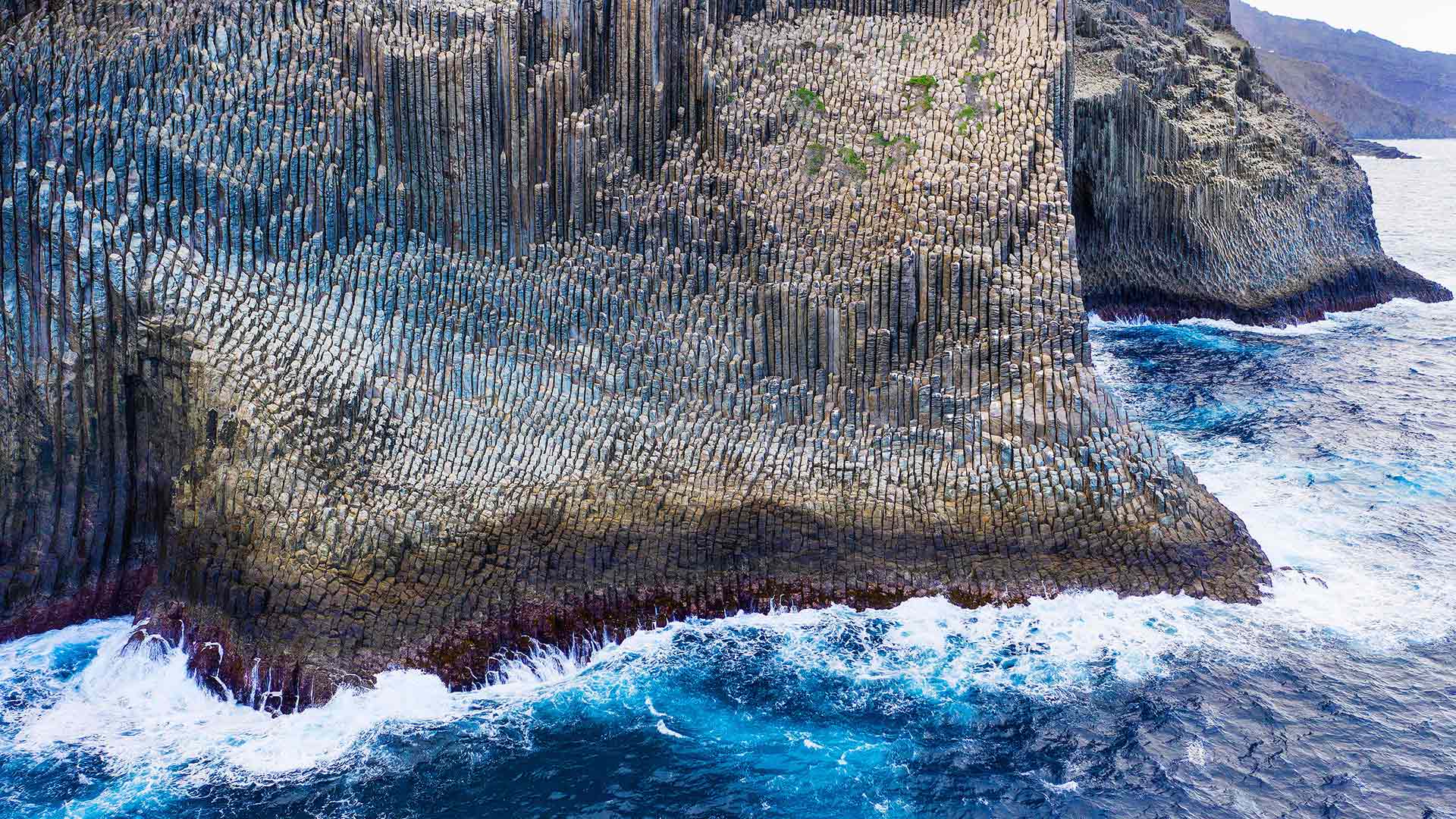标签 西班牙 下的文章
贝纳斯克,西班牙韦斯卡 The village of Benasque, Huesca, Spain (© Miscelleneoustock/Alamy)
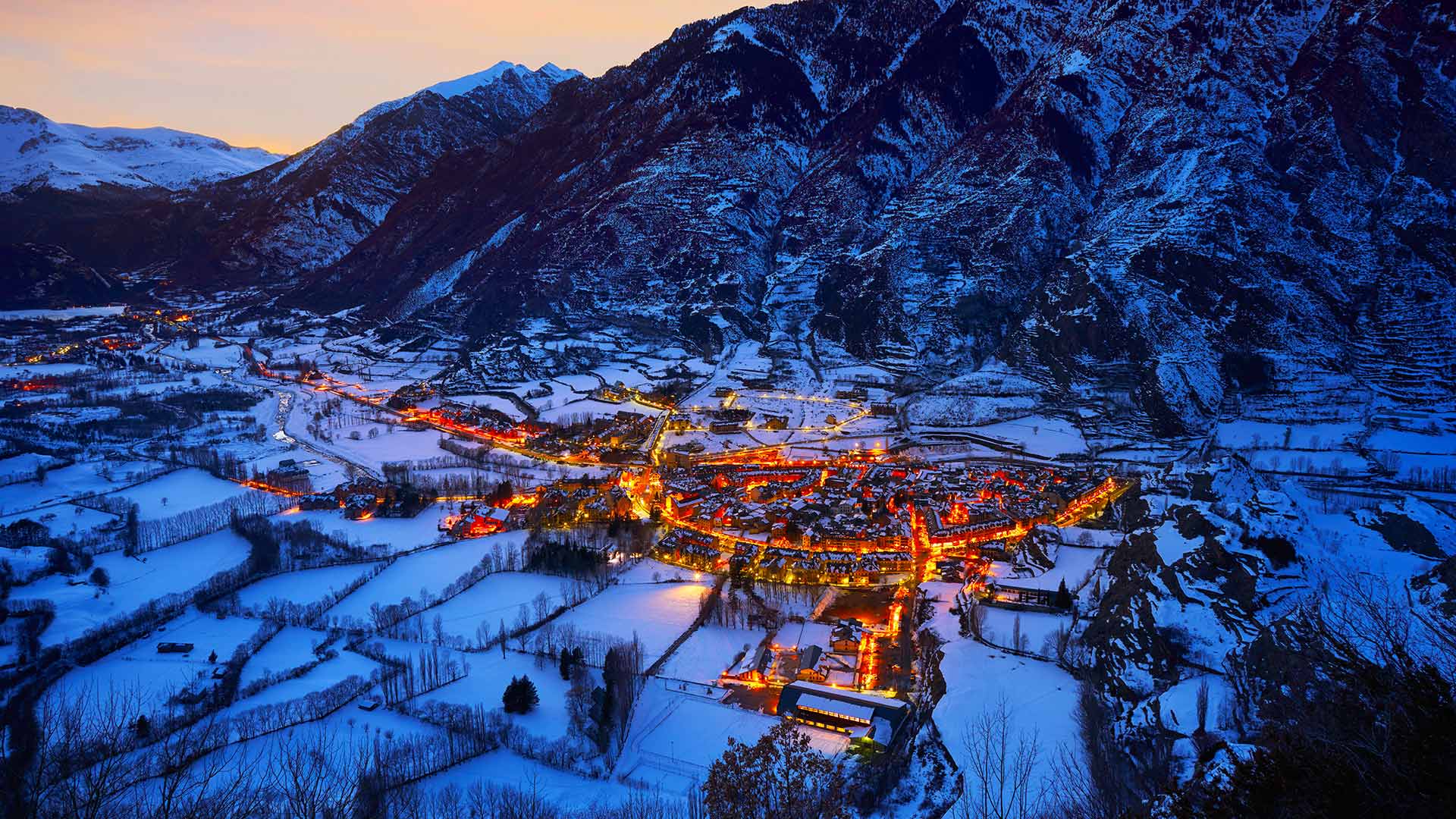
贝纳斯克,西班牙韦斯卡 The village of Benasque, Huesca, Spain (© Miscelleneoustock/Alamy)
A cozy winter village
When snow blankets the steep slopes of the Pyrenees—the mountain range that forms a natural border between Spain and France—the cozy Spanish village of Benasque offers a cheerful refuge on a winter's eve. Beautifully preserved Romanesque and Renaissance manors and churches line the narrow cobblestone streets, and it's easy to feel as though you've stepped back in time. Aside from these cultural charms, most visitors come to Benasque for outdoor adventure. Surrounded by the highest peaks of the Pyrenees, the Benasque Valley receives heavy snowfall and is a popular skiing destination. Summer attracts even more visitors to the area, when hiking, mountain biking, paragliding, and river rafting are big draws.
一个舒适的冬季村庄
当积雪覆盖比利牛斯山脉的陡峭山坡时(该山脉是西班牙和法国之间的天然边界),舒适的西班牙村庄贝纳斯克(Benasque)在冬天的前夜提供了一个避风港。 保存完好的罗马式和文艺复兴时期的庄园和教堂排在狭窄的鹅卵石街道上,让您有种时光倒流的感觉。 除了这些文化魅力外,大多数游客都来贝纳斯克(Benasque)进行户外探险。 贝纳斯克山谷被比利牛斯山脉的最高峰所环绕,下大雪,是一个受欢迎的滑雪胜地。 夏天是徒步旅行,山地自行车,滑翔伞和漂流的热门之地,吸引了更多的游客前往该地区。
杜拉通河谷中的Nuestra Señora de la Hoz老修道院,西班牙塞哥维亚 Nuestra Señora de la Hoz, an old monastery in the Duratón River gorge, Segovia, Castile and León, Spain (© Arco Images GmbH/Alamy)
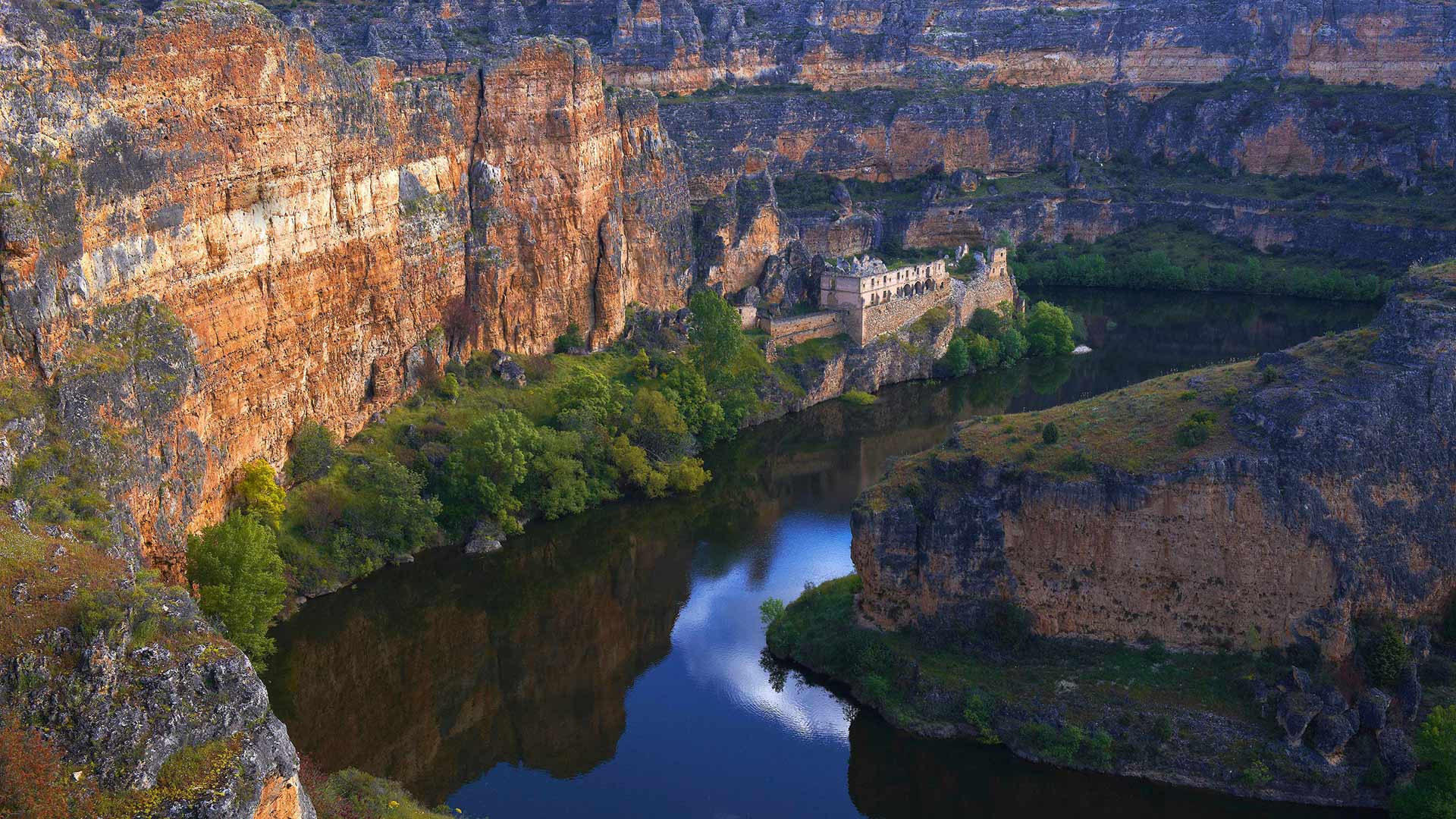
杜拉通河谷中的Nuestra Señora de la Hoz老修道院,西班牙塞哥维亚 Nuestra Señora de la Hoz, an old monastery in the Duratón River gorge, Segovia, Castile and León, Spain (© Arco Images GmbH/Alamy)
A gorge-ous spot for a monastery
Lace up your walking shoes and let’s head into the Hoces del Rio Duratón, in the Spanish region of Castile and León. This imposing 17-mile-long limestone gorge boasts towering vertical walls that can reach up to 100 metres high. The Duratón river which carved it meanders through a landscape rich in history and archaeological treasures.
Inside the cliffs are several caves with ancient paintings dating back to the Bronze Age, and a dark Visigothic grotto which is thought to be the first Christian temple in the region. Above one of the bends in the canyon sits a 12th century Romanesque church, just a few miles away from the ruins of the long-abandoned and isolated Franciscan monastery you see in our homepage image.
阿尔瓦拉辛,西班牙 Albarracín, Spain (© Domingo Leiva/Getty Images)
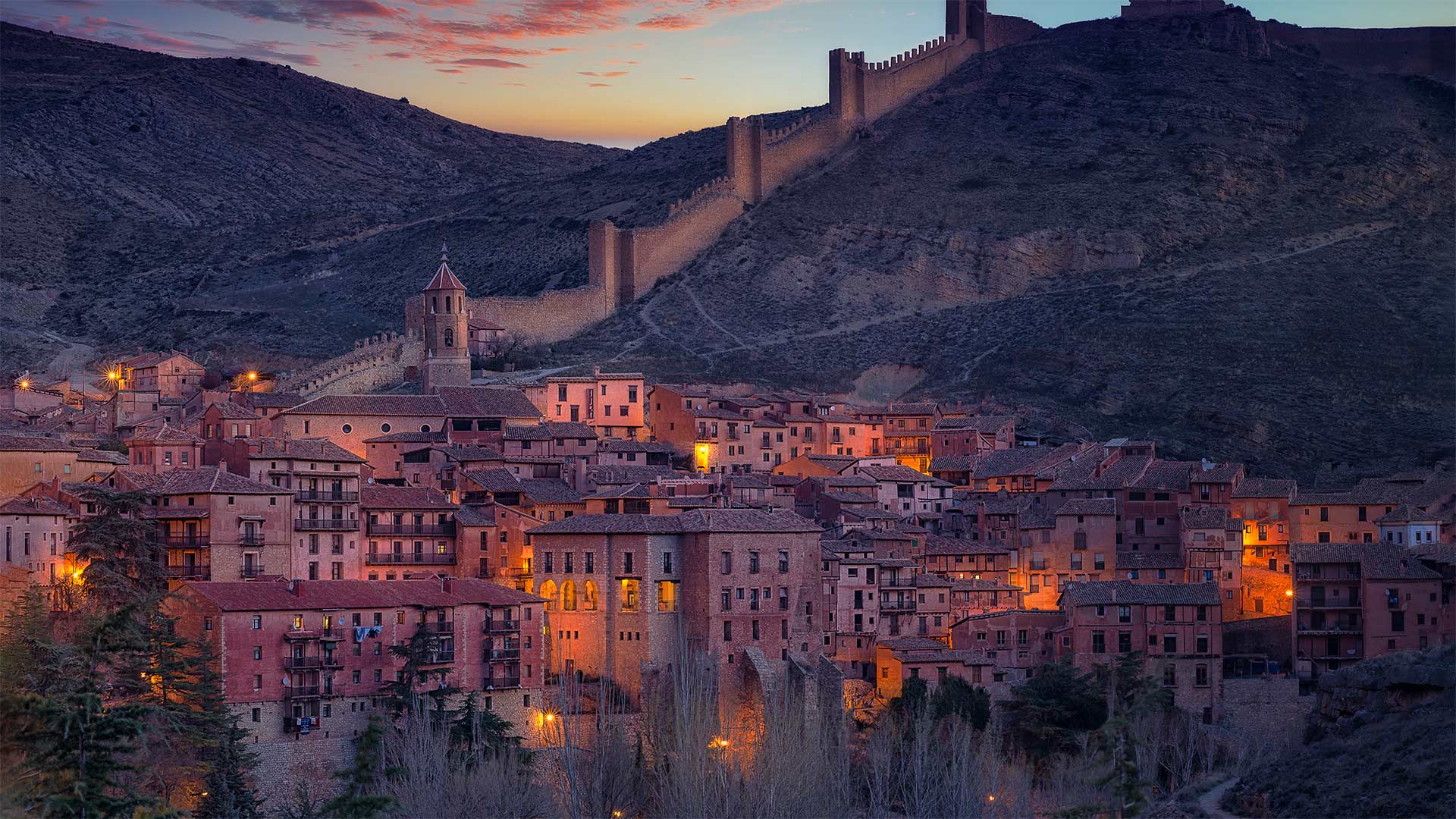
阿尔瓦拉辛,西班牙 Albarracín, Spain (© Domingo Leiva/Getty Images)
A medieval Moorish gem
Originally founded as the capitol of a small Moorish kingdom in the 10th century, Albarracín remains one the most perfectly preserved medieval towns in Spain. The town's narrow winding streets, centuries-old architecture, and dramatic defensive walls are all constructed with the pink-hued gypsum found throughout the region. Aside from its historical charms, Albarracín is also a popular destination for rock climbers who come to scale the red boulders and cliff faces outside the village's fortress walls.
洛阿雷城堡,西班牙韦斯卡 Castle of Loarre, in Hoya de Huesca, Aragon, Spain (© Sebastian Wasek/Alamy)
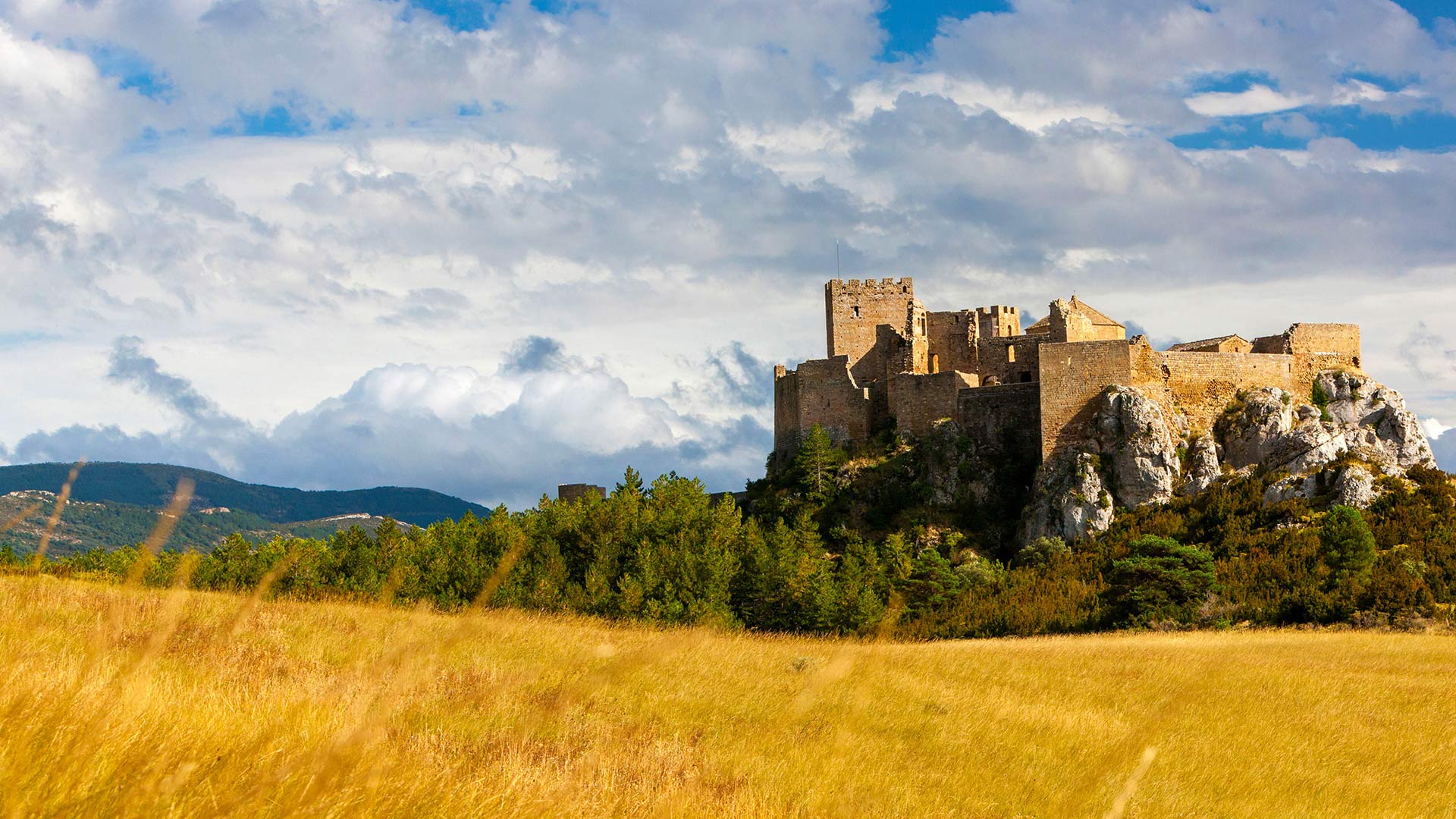
洛阿雷城堡,西班牙韦斯卡 Castle of Loarre, in Hoya de Huesca, Aragon, Spain (© Sebastian Wasek/Alamy)
Floating in time
The castle of Loarre we show you today is a Romanesque jewel that has remained suspended in time for almost a thousand years near the Spanish side of Pyrenees mountain range. It was built by king of Navarre Sancho ‘the Great’ in the 11th century and there’s no other equal or better preserved fortress of that style in all of Europe.
Once finished, in 1070, it became an unbreakable bastion that played a crucial role in the “Reconquest” of the Aragonese territories occupied during the Arab invasion three centuries before, since it was in the battle frontline and mounted on a rocky hill that made it impregnable. From there Sancho’s grandson troops took back the city of Huesca and managed to advance near Zaragoza. And once the battleground had moved further in the south, the castle became a monastery, was expanded two times and surrounded finally by an outer wall to protect the population settled at its feet.
Today, Loarre is a protected national monument that can also be visited. And actually 100,000 people do it every year. If you like epic cinema, you will surely recognize this place, as it has served as stage in several films, like for instance 2005’s “Kingdom of Heaven” directed by Ridley Scott.
阳光穿透加拉霍奈国家公园中的森林,西班牙戈梅拉岛 Sunlight piercing a forest in Garajonay National Park, La Gomera, Spain (© Martin Siepmann/Westend61/Offset by Shutterstock)
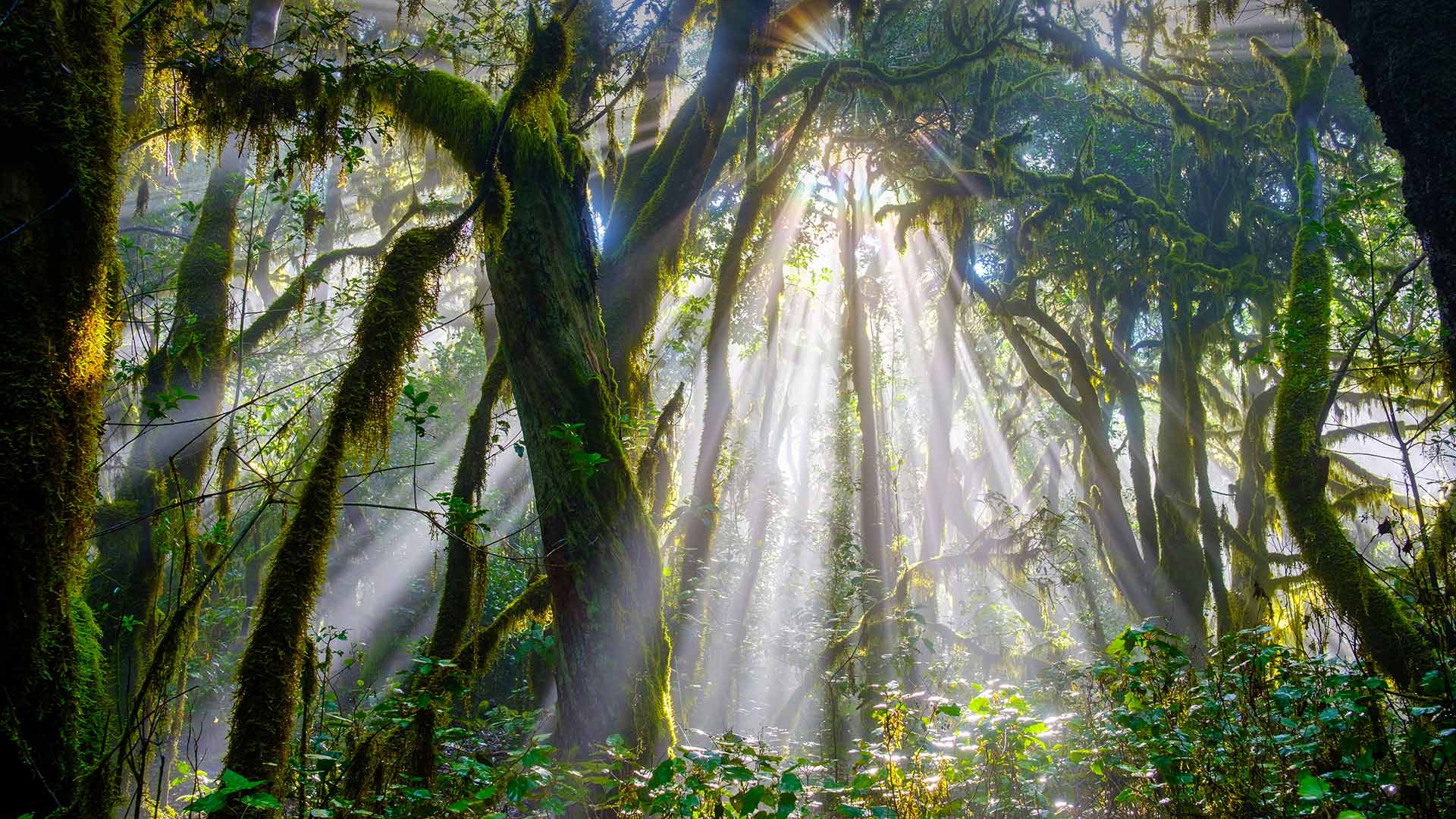
阳光穿透加拉霍奈国家公园中的森林,西班牙戈梅拉岛 Sunlight piercing a forest in Garajonay National Park, La Gomera, Spain (© Martin Siepmann/Westend61/Offset by Shutterstock)
20 million years ago…
Let’s go back 20 million years ago. The forest that you see in our image today and that looks like a tropical jungle is one of the oldest in Europe. It is located in Garajonay National Park, on the Canary Island of La Gomera, Spain. And it represents the best example that exists in the Old World of the Cenozoic flora that once covered all the Mediterranean basin.
This is a laurissilva or laurel forest. And if it has survived to our days, it is because of the special conditions of temperature and humidity of this fascinating volcanic island, where the mist tangles around the trees covered by lichens and ferns, creating a dreamlike atmosphere that seems to be taken from a fairies tale. In fact, the name Garajonay comes from a popular legend that also names the highest peak in La Gomera, “Alto de Garajonay”, which is almost 1,500 meters high.
鸟瞰兰萨罗特岛的La Geria葡萄园,西班牙加那利群岛 Aerial view of La Geria vineyards, Lanzarote, Canary Islands, Spain (© Orbon Alija/Getty Images)
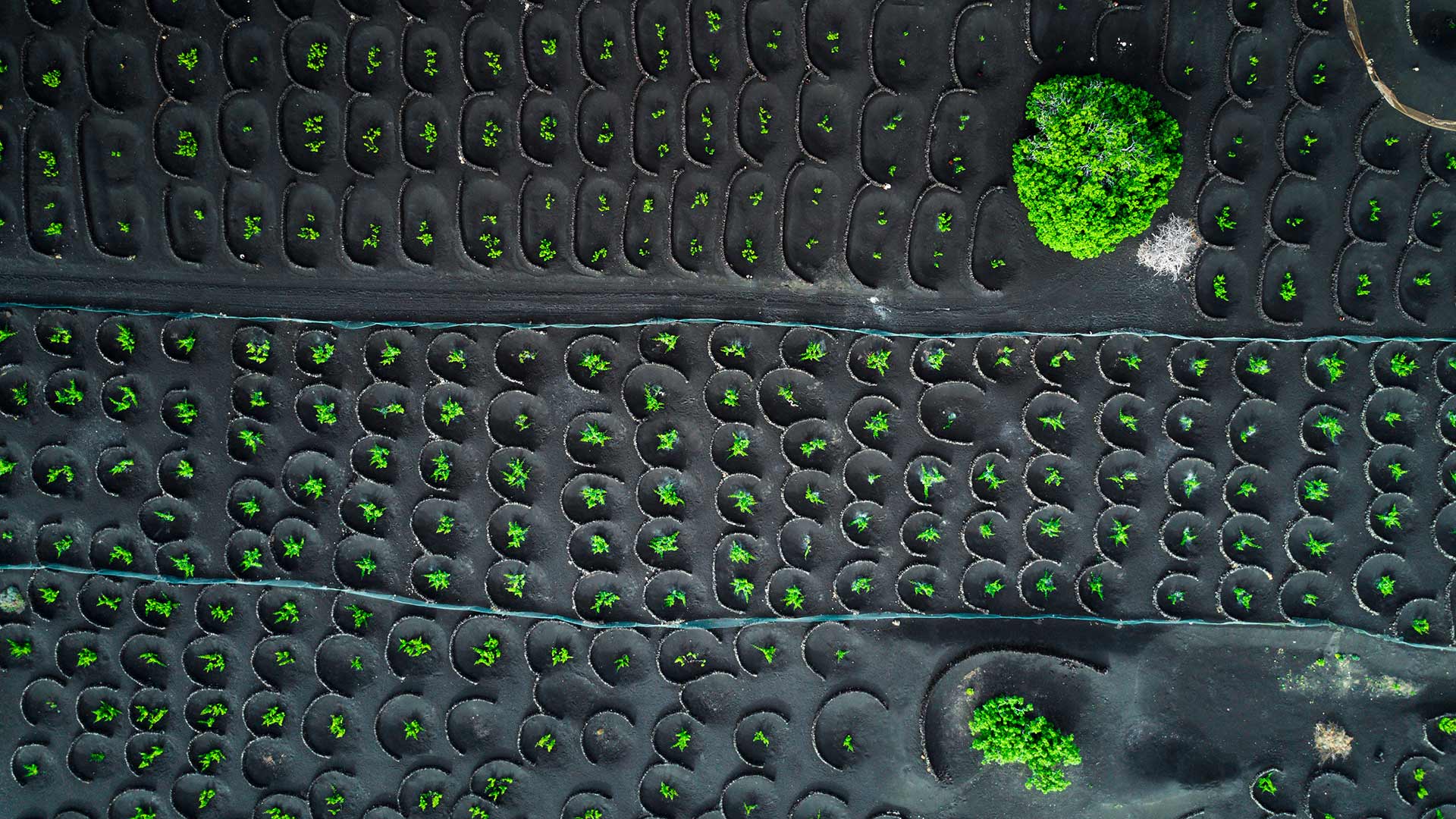
鸟瞰兰萨罗特岛的La Geria葡萄园,西班牙加那利群岛 Aerial view of La Geria vineyards, Lanzarote, Canary Islands, Spain (© Orbon Alija/Getty Images)
Volcanic vineyards
What you can see today in our picture is a bird view of La Geria vineyards, in the Canary island of Lanzarote. They have been there since 18th century and are cultivated following a very special technique, because the vines are planted under the volcanic lapilli, a blanket of ash about two and a half meters thick that covers the land since Timanfaya volcano erupted in 1730 transforming the landscape forever.
To reach the fertile soil, farmers first dig a cone-shaped hole and then build a small stone wall to protect the vines from the trade winds. And since the volcanic ash on the surface prevents rainwater evaporation and captures environmental moisture, plants do not even need added watering.
The variety the most cultivated in this place is volcanic Malvasia, a very special and also very delicate white grape allowing both dry and sweet wines. Due to its unique characteristics, La Geria has also been a protected area since 1987, just as the neighbour Timanfaya National Park, where you can see up to 25 volcanoes concentrated in 51 square kilometers.
鸟瞰戈梅拉岛上管风琴形状的玄武岩,西班牙加那利群岛 (© Martin Siepmann/Image BROKER/Offset by Shutterstock)
云下的麦田,西班牙巴利亚多利德 Wheat field against cloudy sky, Valladolid, Castilla y León, Spain (© Carlos Javier García Prieto/EyeEm/Getty Images)
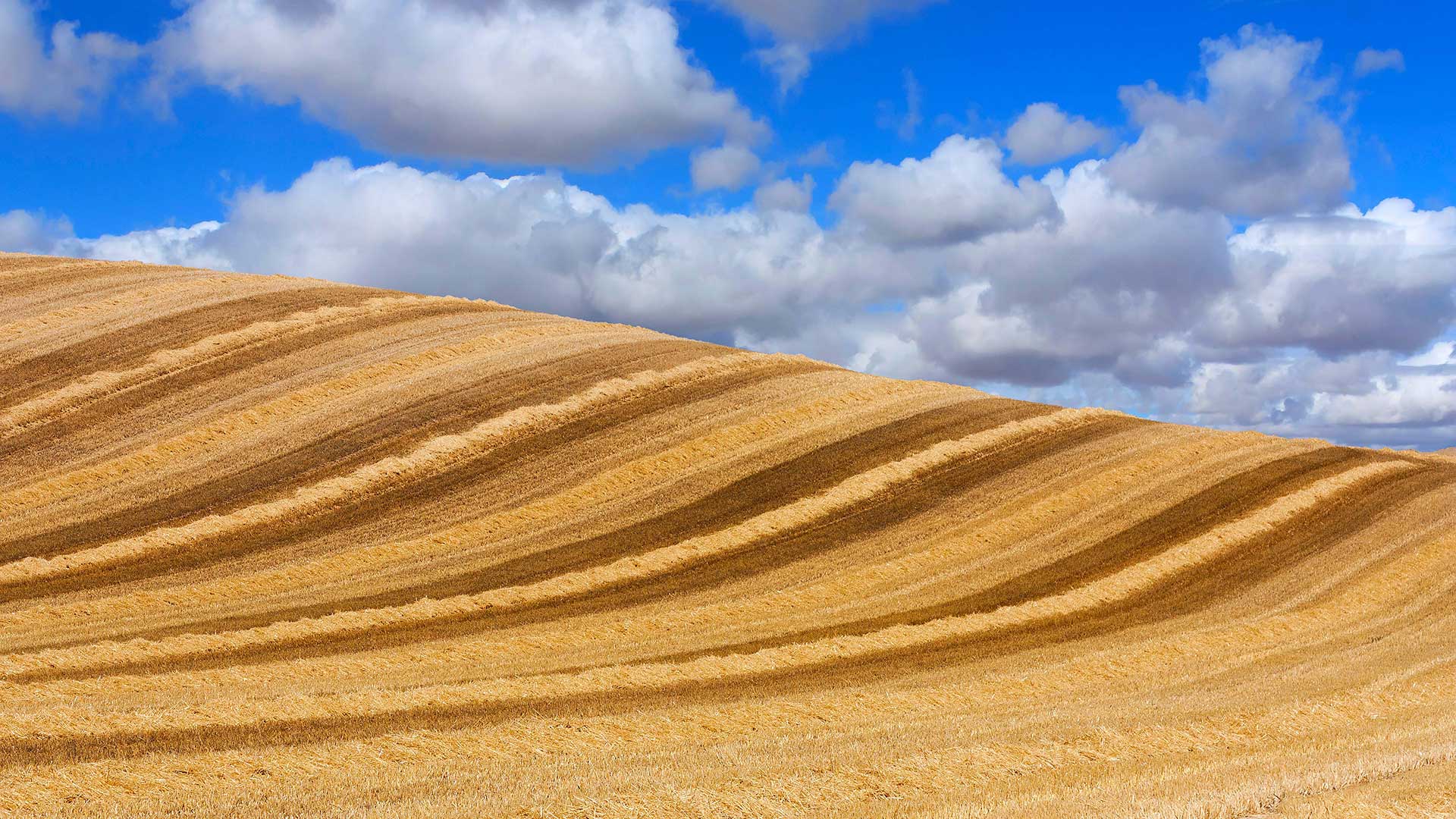
云下的麦田,西班牙巴利亚多利德 Wheat field against cloudy sky, Valladolid, Castilla y León, Spain (© Carlos Javier García Prieto/EyeEm/Getty Images)
Fields of Castile
What you can see today in our image is a wheat field in the province of Valladolid, northwest Spain, cut out under the Castilian sky. We show you this because now is taking place the harvest season in most of the country. And also because on this day in 1875 was born Spanish poet Antonio Machado, whose master piece is called ‘Campos de Castilla’ (Fields of Castile).
Machado wrote it during his stay in Soria, not in Valladolid (both provinces belong to the same region), and managed to portray with extraordinary fidelity the personality of the rural Castilians, with their weaknesses and virtues, as a metaphor of the whole country. As long as he described dozens of landscapes as the one you can see in the picture.
Las Catedrales beach, Galicia, Spain (© Davide Seddio/Getty Images)
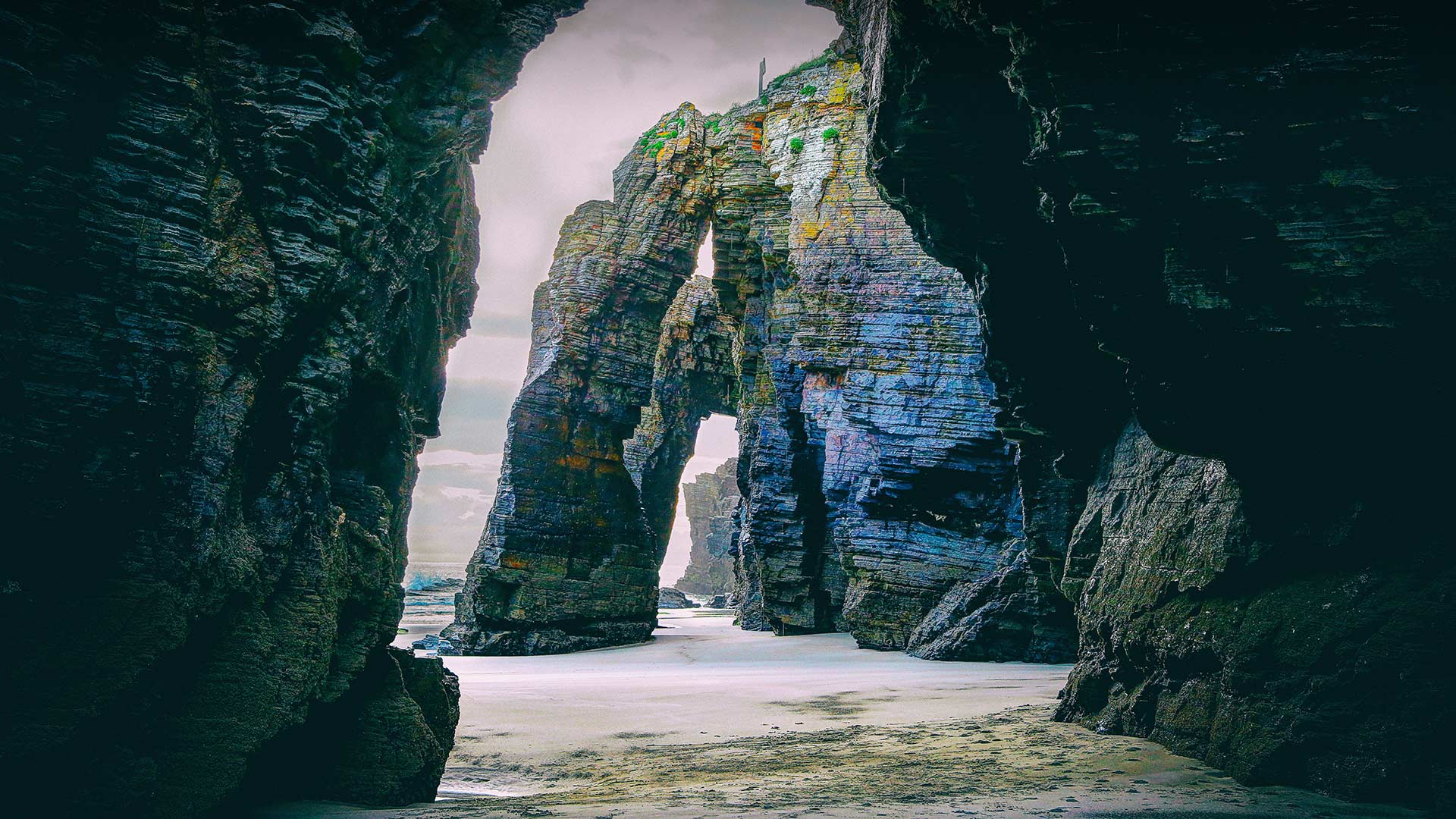
Las Catedrales beach, Galicia, Spain (© Davide Seddio/Getty Images)
The mystery of As Catredrais
The beach of As Catedrais (The Cathedrals) we show you in our picture is one of the most beautiful and mysterious in northern Spain. It’s on the Way of Saint James (Camino de Santiago), very close from Galician town of Ribadeo, and its real name is Aguas Santas beach (Holy Waters). Everybody calls it The Cathedrals because of the arches growing from the sand tongue, which look like the buttresses of a Catholic church. They’re supposed to be natural carved by the action of salty water and wind over millions of years. And the most superstitious locals belive there’s a door in this place connecting with the beyond.
However, all these theories and legends could collapse like a house of cards If it was not the sea, but the man, who carved the rock long time ago. Or at least, if both, men and nature, worked together to form this landscape. A group of expert geologists maintain from some years now these arches and caves are not natural but the remains of an ancient Roman gold mine. They refer to archaeological studies confirming the presence of this civilization in the area looking for gold, and believe certain capricious forms of the stone suggest the action of men rather than nature or spirits.
La Pertusa教堂,西班牙莱里达 Hermitage of La Pertusa, Lleida province, Spain (© bbsferrari/Getty Images)
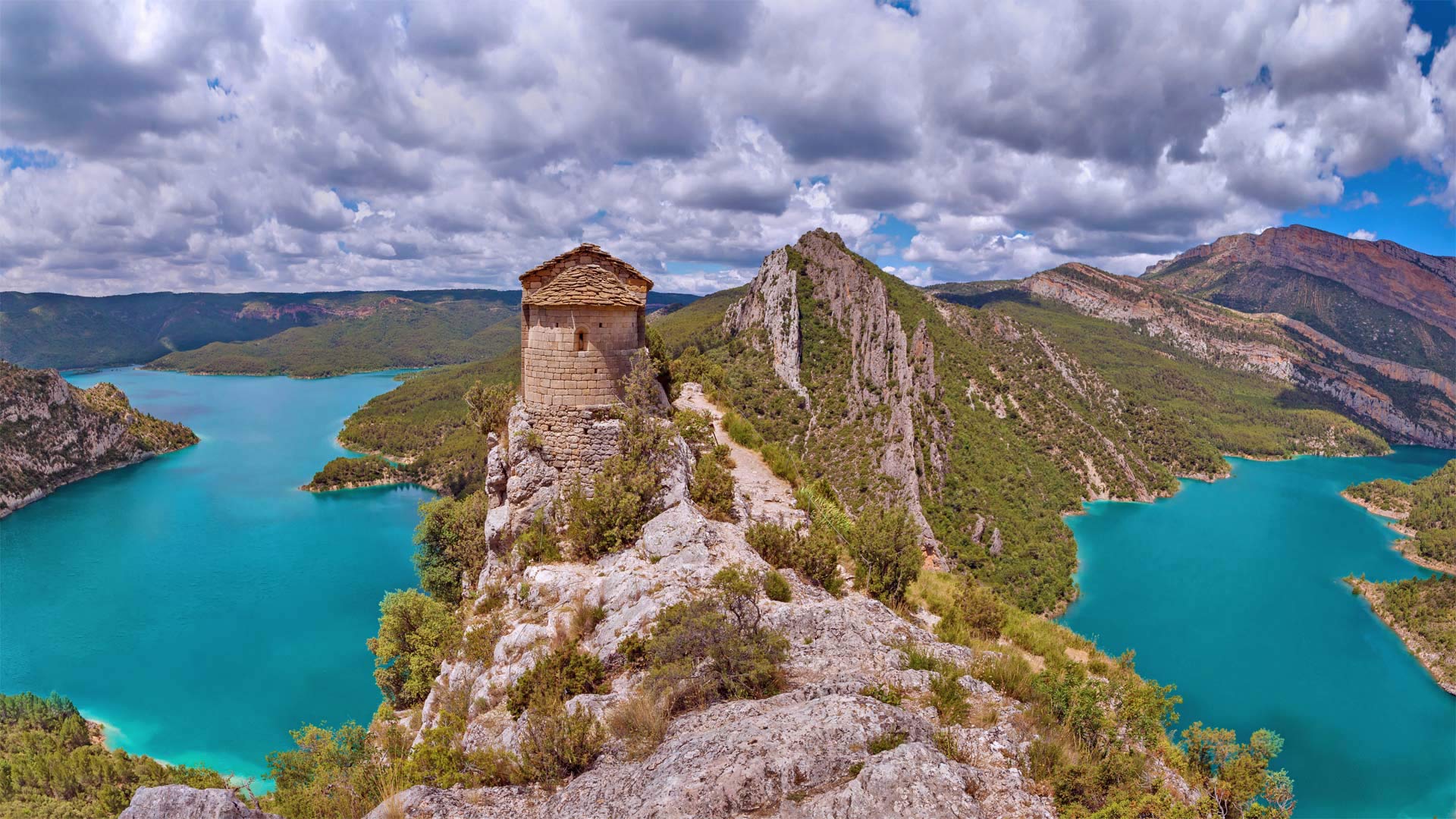
La Pertusa教堂,西班牙莱里达 Hermitage of La Pertusa, Lleida province, Spain (© bbsferrari/Getty Images)
A hermitage with a view
If this vivid landscape has you feeling pulled into the photo, take a deep breath before you look right or left. Or maybe just fix your gaze on the medieval brick ruin ahead—the Hermitage of La Pertusa in northern Catalonia, Spain. Glance sideways and you'll be greeted by sheer vertical drops to the basin of the Canelles Reservoir, across which lies the region of Aragon—historically a powerful kingdom that ruled Catalonia and much of the Mediterranean.
An actual visit to this spot would require traversing a steep, rocky trail to the narrow outcrop that hosts the hermitage, once the chapel of a long-collapsed Romanesque castle. But imagine the reward: a vista of the beauty Catalonia offers beyond busy Barcelona.
